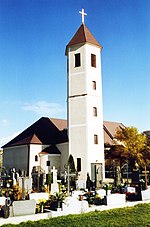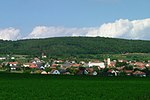Karlstetten
Cities and towns in St. Pölten-Land District

Karlstetten is a community in the district of Sankt Pölten-Land in the Austrian state of Lower Austria. It has 2182 inhabitants.
Excerpt from the Wikipedia article Karlstetten (License: CC BY-SA 3.0, Authors, Images).Karlstetten
Rückenweg, Gemeinde Karlstetten
Geographical coordinates (GPS) Address Nearby Places Show on map
Geographical coordinates (GPS)
| Latitude | Longitude |
|---|---|
| N 48.25 ° | E 15.566666666667 ° |
Address
Rückenweg
Rückenweg
3121 Gemeinde Karlstetten
Lower Austria, Austria
Open on Google Maps










